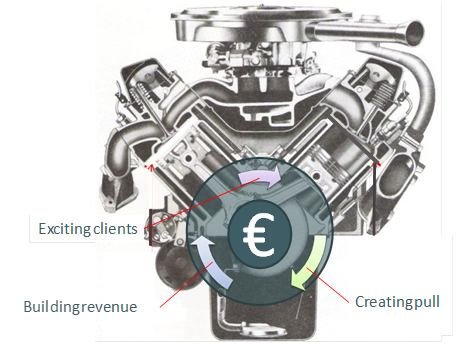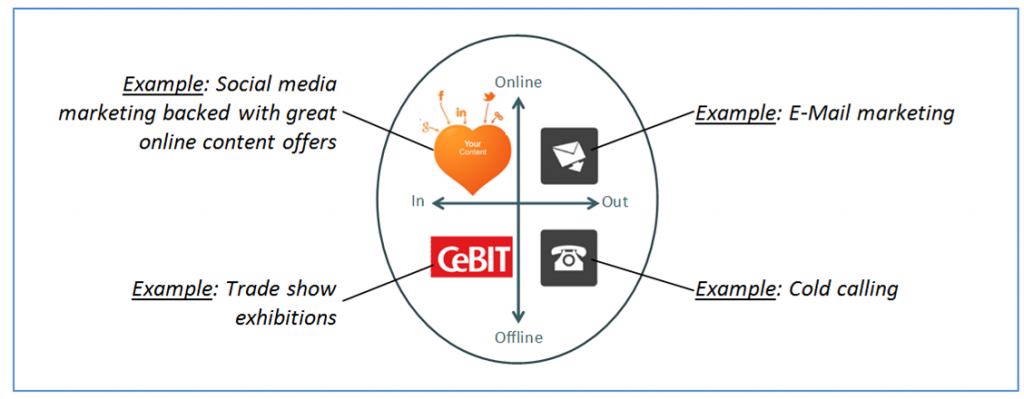Rev it up: building the ultimate sales machine. Part 1 – lead generation
Introduction
You have to excuse me for my gear-headedness, but I have spent 8 years of my career in Detroit. In Motown, acceptable topics for polite conversation with strangers at a birthday party are the latest car-models or the woes of supplier so-and-so. B2B sales organizations show lots of similarities with engines. The Ultimate Sales Machines is firing from the following three cylinders: creating pull, building revenue and exciting clients. This is installment one: creating pull.
Cylinder 1: creating pull
Cylinder 1 is the fuzzy front-end of the sales cycle: generating a good volume of strong leads, the lifeblood for sales. To make this cylinder hum you’ll need to:
- understand who the buying personas are,
- what ‘keeps them up at night’ and
- where they hang out when they look for solutions to their problems.
The lead generation matrix
Once you have this insight, you can start crafting your lead generation cylinder. Essentially, it will be a mix of the 4 different lead generation options (inbound or outbound or offline vs. online) from the picuture below:
Each of these options has it’s own characteristics, which I have summarized in the following table:
Main takeaways
- Online lead generation beats offline lead generation from a cost perspective: the cost per qualified lead is significantly lower. Always do this first, unless your buying persona are simply not online.
- Inbound lead generation beats outbound lead generation from a cost perspective: the cost per qualified lead is significantly lower. This should always be your long-term strategy.
- Outbound lead generation yields quick results (qualified leads generated in days or weeks), inbound lead generation takes months of effort and time. If you need to show quick results, focus on outbound, and try to do it online.
There’s no complete free choice in how to generate leads. For example:
- The inbound vs. outbound dimension depends on your timeframe: short term or long term? For example, entering a new market needs to be done by a combination of expensive but quick outbound lead generation in conjunction with the establishment of an inbound program. The goal is to reduce outbound once the inbound program starts to yield enough high-quality leads.
- The offline vs. online dimension depends on where your buying persona hang out. My personal advice (at least for B2B Technology companies) is to not spend a nickle or cent on outbound at all for lead generation, unless you have overwhelming proof to the contrary.
What’s next?
The installment of this mini blog-series is building revenue’ – turning qualified leads into Purchase Orders.
This article was written by rondekko




